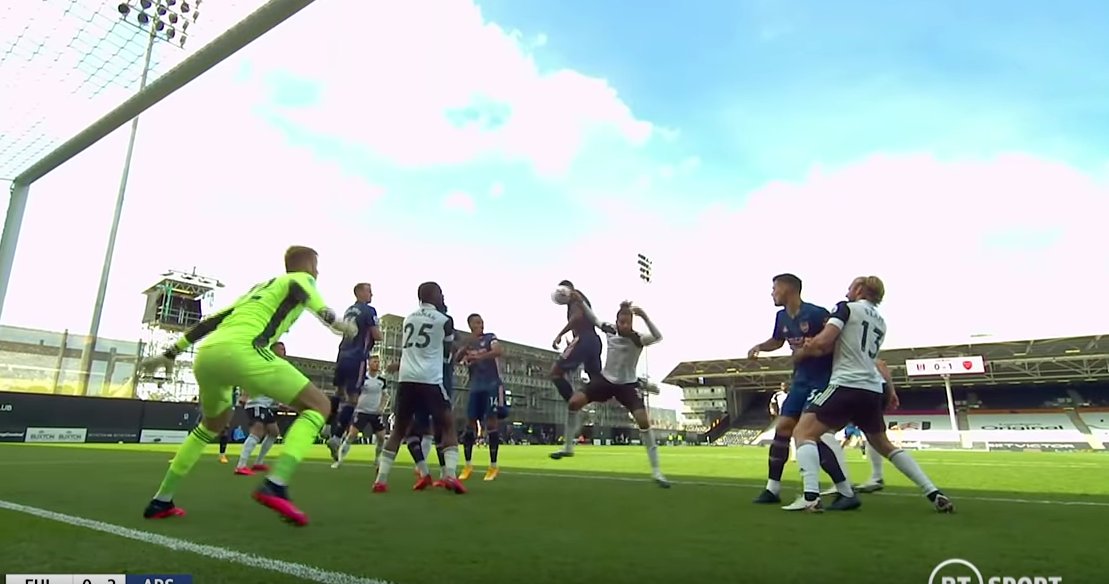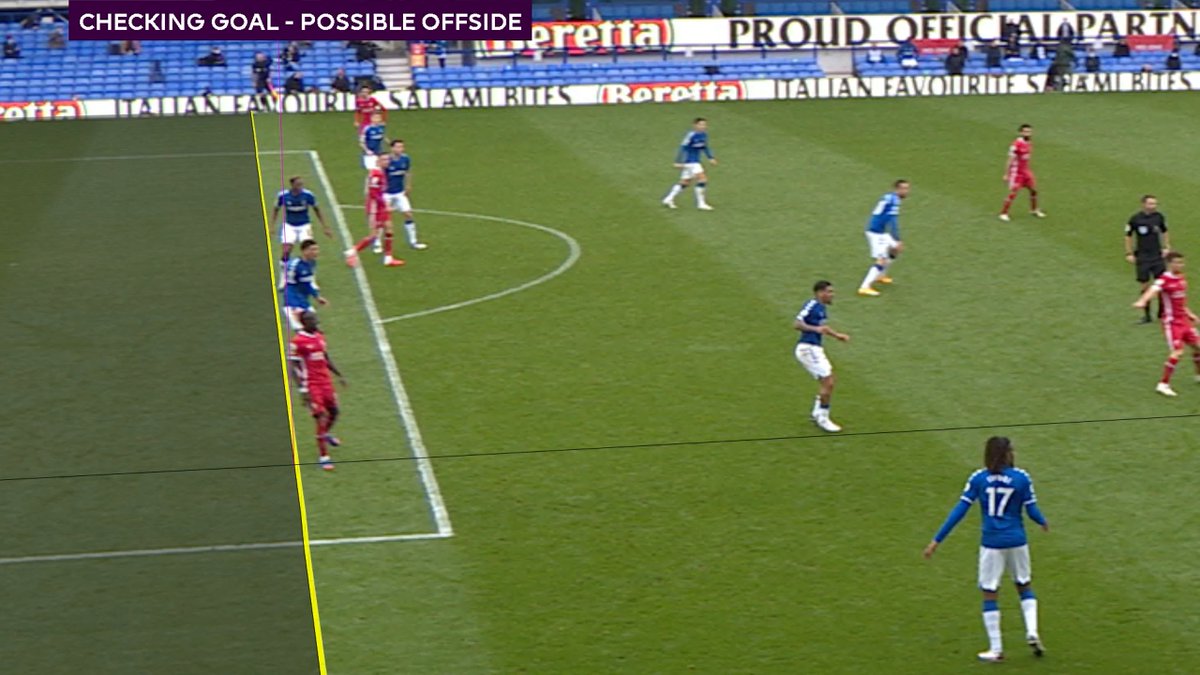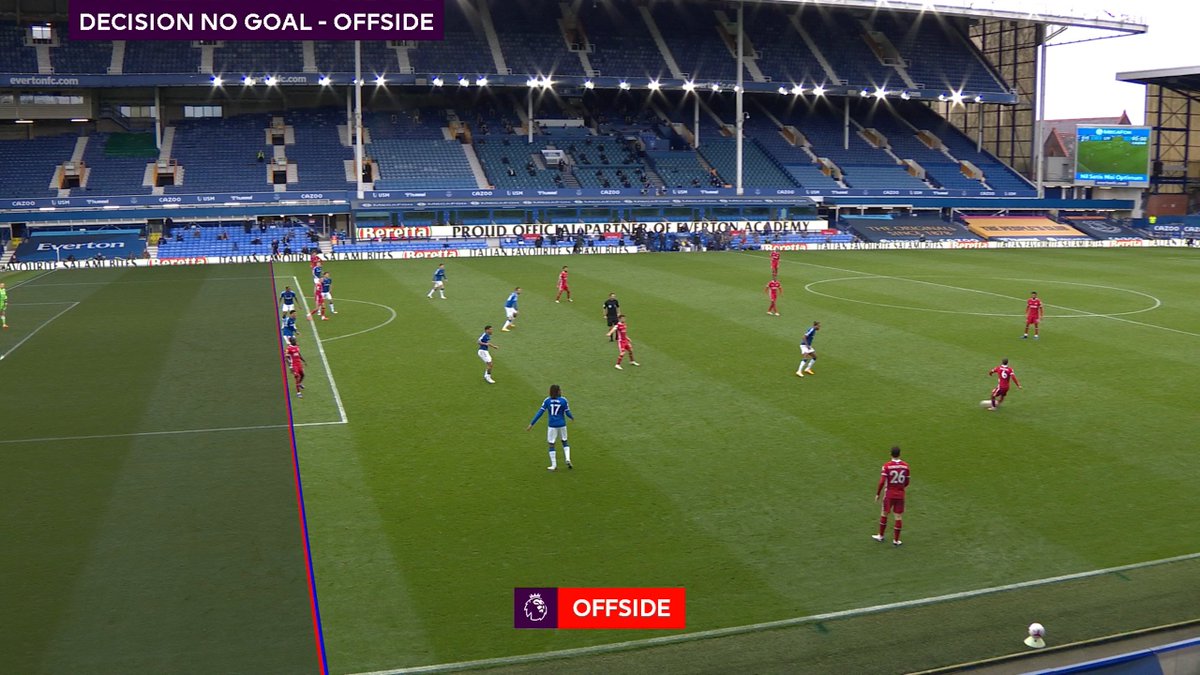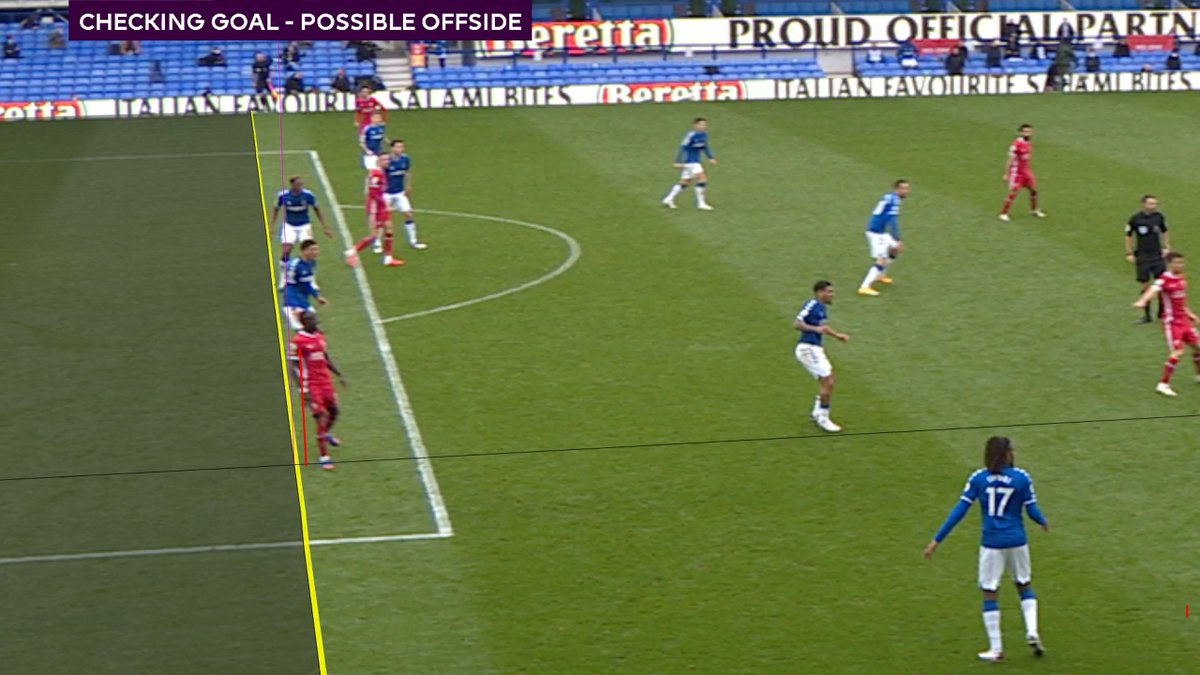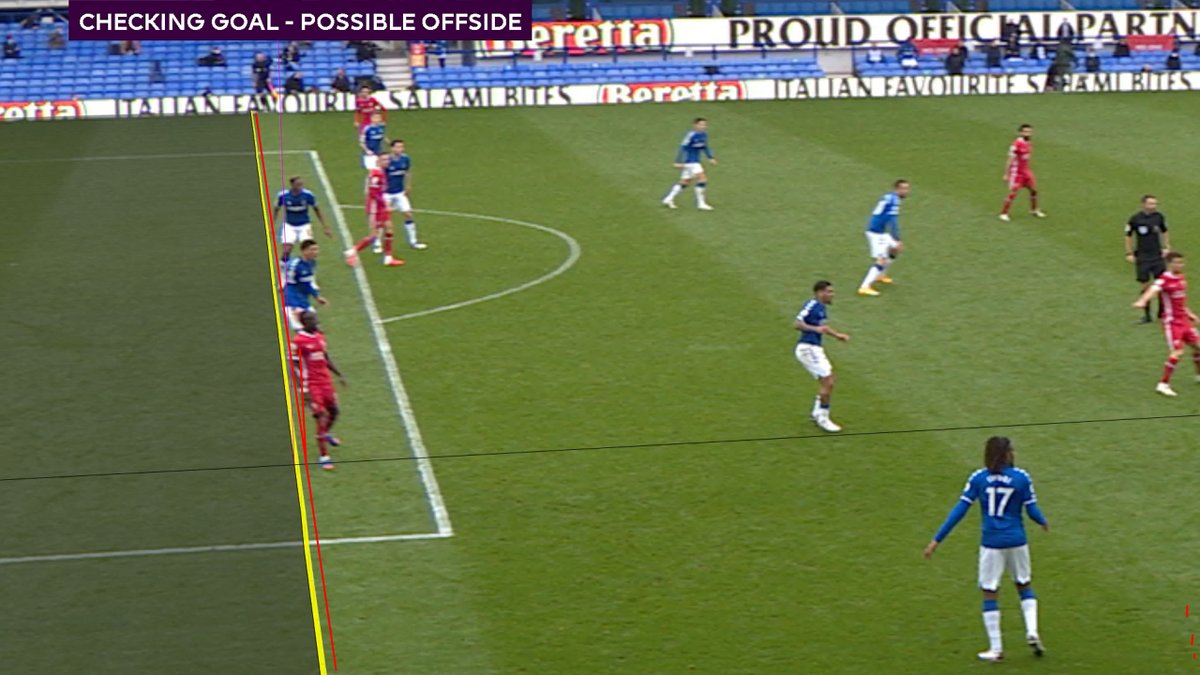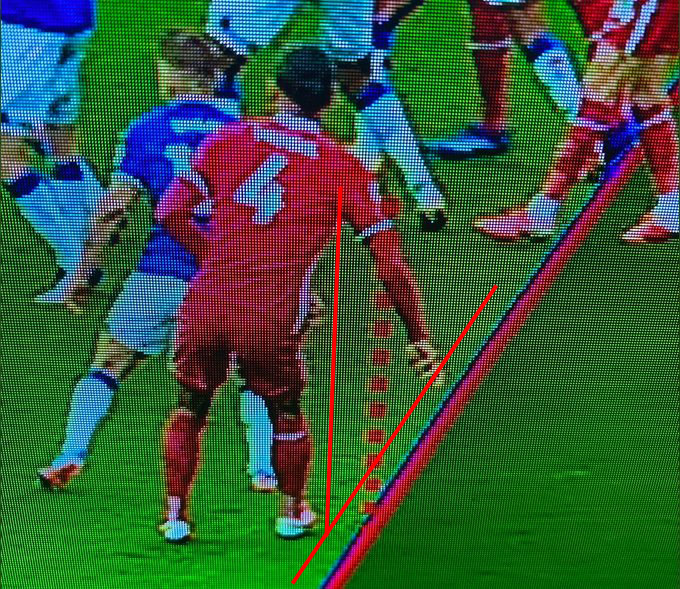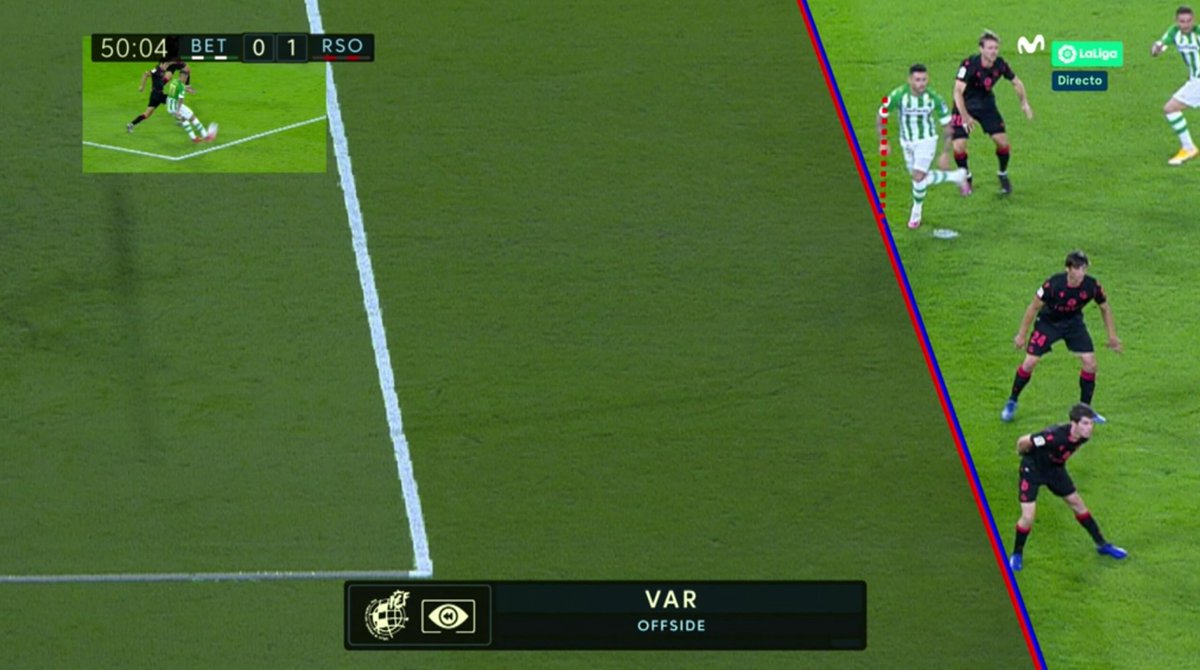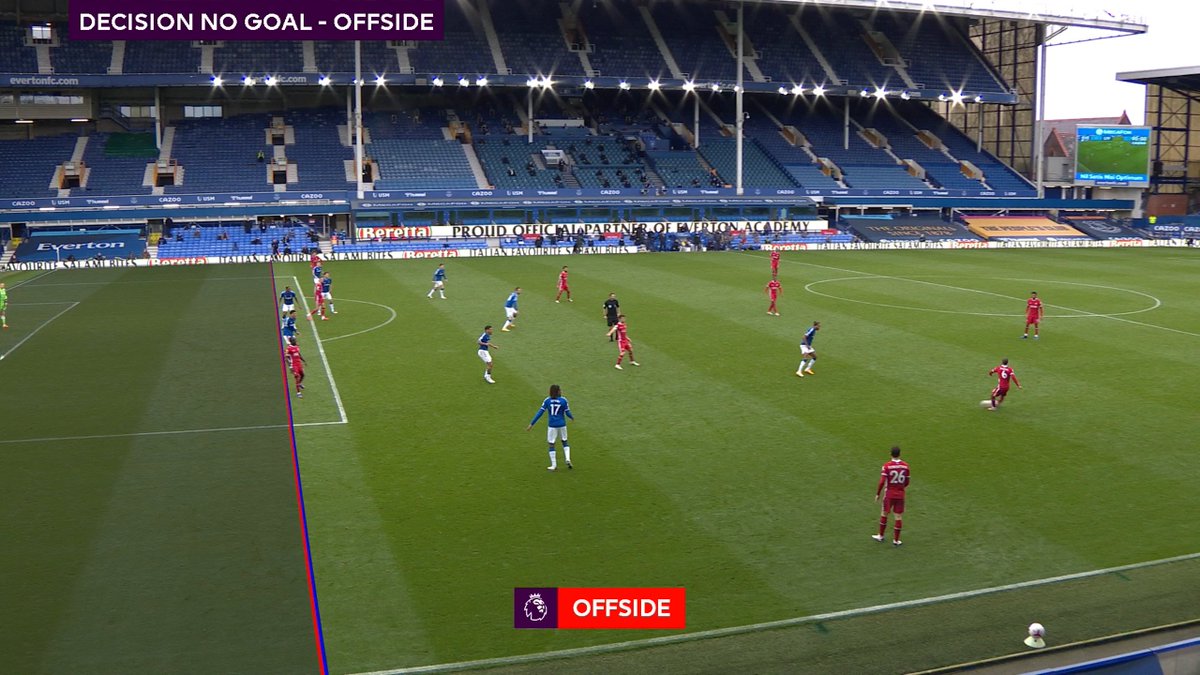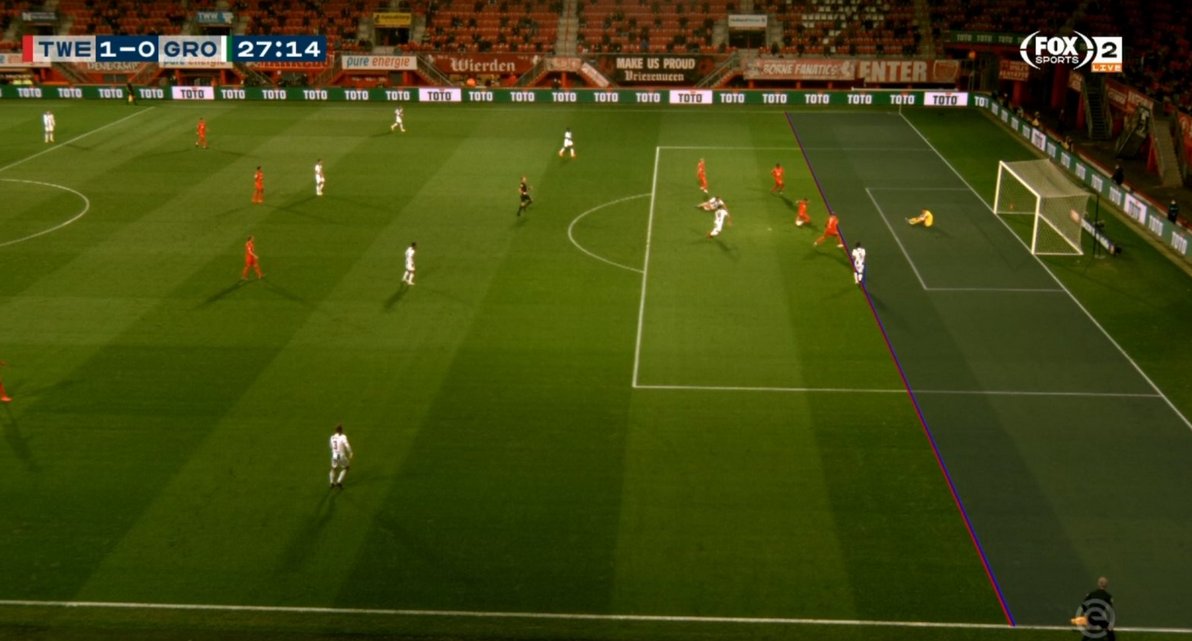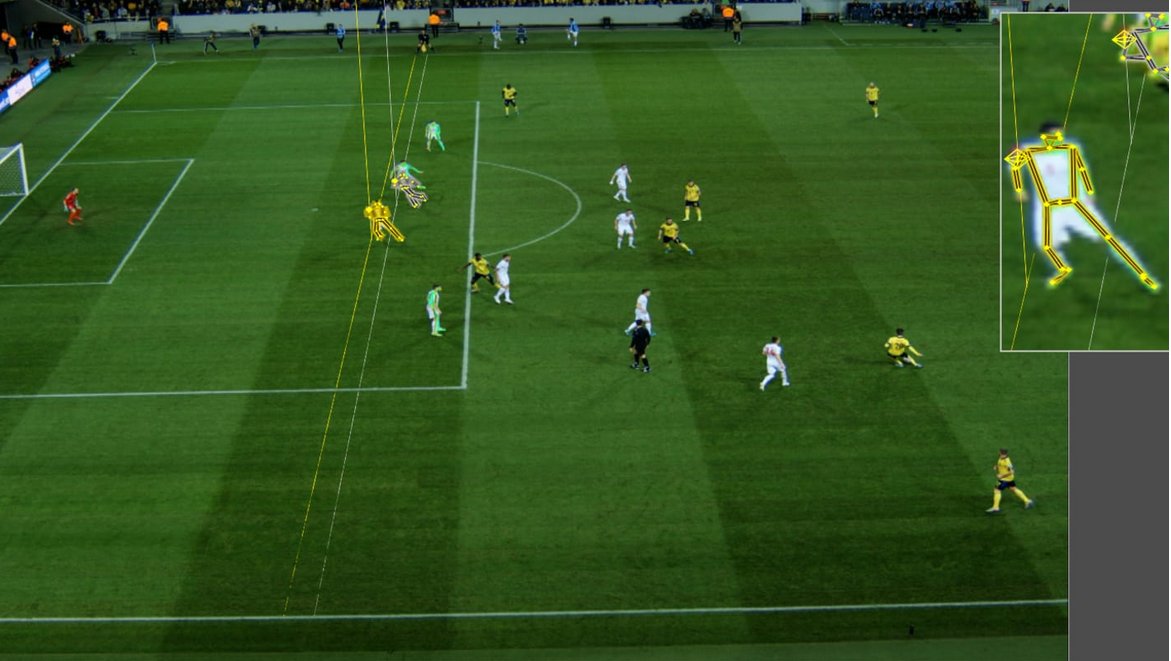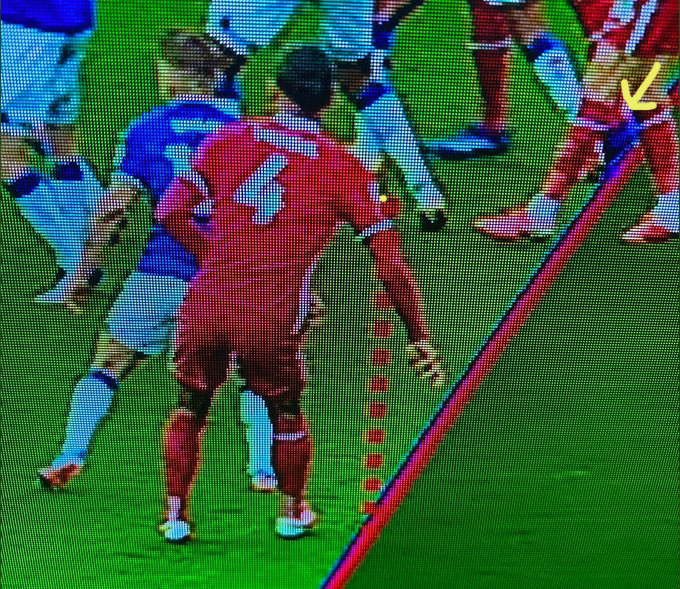Here it is. The Monday VAR thread, offside special.
- What you're looking at / how it's done
- The true flaws in the system
- Why Mane offside correct (in process)
- Why law change made Van Dijk and Mane offside
- Upcoming automated offside
- PLUS: Pickford
It's long....
- What you're looking at / how it's done
- The true flaws in the system
- Why Mane offside correct (in process)
- Why law change made Van Dijk and Mane offside
- Upcoming automated offside
- PLUS: Pickford
It's long....
The first thing the VAR decides is the first point of contact of the pass on the ball.
Many scream about the frame rate without understanding the actual issue.
Frame rate doesn't mean it is not possible to make an accurate decision. However, it is inconsistent.
Many scream about the frame rate without understanding the actual issue.
Frame rate doesn't mean it is not possible to make an accurate decision. However, it is inconsistent.
The correct frame for the first point of contact on the pass will almost always be clear to the VAR.
So when people say "that's not the correct frame, the ball has left the foot" it's not actually a problem of frame choice.
The problem is that the correct frame does not exist.
So when people say "that's not the correct frame, the ball has left the foot" it's not actually a problem of frame choice.
The problem is that the correct frame does not exist.
The VAR is presented by the Hawk-Eye RO with three consecutive frames to represent the first touch of the ball.
The VAR will choose one, and it will usually be obvious. But that frame may be "late", with the "correct" frame between frames.
Or it might actually be correct.
The VAR will choose one, and it will usually be obvious. But that frame may be "late", with the "correct" frame between frames.
Or it might actually be correct.
It's why, on some occasions, people question if the frame is correct. Has the ball already left the foot?
Put simply, if the previous frame is before the pass has begun it's not valid. The VAR has to choose the first frame when the pass has definitely begun.
Put simply, if the previous frame is before the pass has begun it's not valid. The VAR has to choose the first frame when the pass has definitely begun.
So frame rate can be an issue, though I'd suggest it's not quite as unreliable as some claim.
Reports that there is a 12cm margin of error are only correct when you have a very fast player, running, AND the precise frame is not there.
There is NO consistent margin of error.
Reports that there is a 12cm margin of error are only correct when you have a very fast player, running, AND the precise frame is not there.
There is NO consistent margin of error.
Now specifically onto the Sadio Mane offside, breaking it right down to show why it was the correct decision - based on the current use of technology.
Hopefully this is going to make it very clear. You don't have to like it, but it should explain it.
Hopefully this is going to make it very clear. You don't have to like it, but it should explain it.
The key issue on both the Mane and Virgil van Dijk offsides was the change in the handball law.
An unintended consequence of the law change, to prevent fewer goals being disallowed and handball penalties, is that the attacker has been "extended" for offside.
An unintended consequence of the law change, to prevent fewer goals being disallowed and handball penalties, is that the attacker has been "extended" for offside.
"Armpit" offsides are now a thing of the past, because you can play the ball, and indeed score a goal as Gabriel did, with your upper arm.
So whereas last season the VAR would calculate to the armpit, it's now to the outer part of the upper arm (if furthest forward).
So whereas last season the VAR would calculate to the armpit, it's now to the outer part of the upper arm (if furthest forward).
The handball law change has added a crucial new measurement point for offside, which we had not experienced yet this season but then got it twice in one game for Liverpool. And we will see it again.
The measurement point does remain subjective, as it is selected by the VAR.
The measurement point does remain subjective, as it is selected by the VAR.
One thing you should trust in this process is the crosshair lines, which are mapped to each pitch to create 3D imaging.
There are no wonky lines, they are not bent, they are not manipulated. They are computer generated to a set grid.
So how does it work?
There are no wonky lines, they are not bent, they are not manipulated. They are computer generated to a set grid.
So how does it work?
The Hawk-Eye RO will, working with the VAR, first set which defender is furthest forward.
In the case of the Mane offside, the position of both Everton defenders were calculated with Yerry Mina shown to be furthest forward.
Then it's onto the attacker.
In the case of the Mane offside, the position of both Everton defenders were calculated with Yerry Mina shown to be furthest forward.
Then it's onto the attacker.
Remembering how the law has changed, offside has to be calculated to Mane's upper arm.
The line during the process is millimetres thick. This picture shows the calculation point, with the line correctly through Mane's upper arm.
The line during the process is millimetres thick. This picture shows the calculation point, with the line correctly through Mane's upper arm.
The vertical line then thickens out to be the red dotted line, for broadcast purposes.
It is clear here but there are times like this when the angle is square to the incident, when the dotted line can get "lost" when it is shared across social media on low quality images.
It is clear here but there are times like this when the angle is square to the incident, when the dotted line can get "lost" when it is shared across social media on low quality images.
The final VAR image was less clearer still, due to the red and blue lines converging.
This gave the impression that the red dotted line was not touching Mane, that there was a gap. This wasn't the case in the calculation.
This gave the impression that the red dotted line was not touching Mane, that there was a gap. This wasn't the case in the calculation.
There is definitely a subjective element at play here, because the VAR has to set the point on each player, and that may not be consistent.
However, that doesn't mean every decision has the same level of inconsistency.
However, that doesn't mean every decision has the same level of inconsistency.
In the case of Mane, because the calculation point was to an incredible small area at the top of his arm while standing straight there can only be a very small area of variation.
That can be different for, say, Van Dijk who had his arm outstretched.
That can be different for, say, Van Dijk who had his arm outstretched.
The position of the Mane doesn't help here, visually. Perception on a 2D images can mislead.
As Mane is stood straight rather than leaning, and because it's his upper arm rather than his body, it gives the illusion, against the foot of Mina, that Mane is definitely behind.
As Mane is stood straight rather than leaning, and because it's his upper arm rather than his body, it gives the illusion, against the foot of Mina, that Mane is definitely behind.
So, to explain just how much of a difference the handball law change has made, here's both decisions calculated to last season's "armpit" rule.
Both Mane and Van Dijk well onside.
(Not official images of course)
Both Mane and Van Dijk well onside.
(Not official images of course)
But don't go thinking this is just happening in the Premier League.
Here is a goal disallowed for offside in La Liga on Sunday night. It's remarkably similar to Mane (and Van Dijk) with the attacker offside by the extended arm.
Here is a goal disallowed for offside in La Liga on Sunday night. It's remarkably similar to Mane (and Van Dijk) with the attacker offside by the extended arm.
We've been told how the Premier League asked to have a margin of error in offside tech and it was denied by FIFA.
Well, in the Eredivisie this season it's the first season of this same offside tech.
Guess what? Yep, they are using the 10cm margin of error the PL wanted.
Well, in the Eredivisie this season it's the first season of this same offside tech.
Guess what? Yep, they are using the 10cm margin of error the PL wanted.
That 10cm margin of error is the lines touching, as the lines are each 5cm thick.
But the Eredivisie works with umpire's call, so in Liverpool's case they still would not have got a penalty on Van Dijk and the Mane decision is extremely borderline for the overturn.
But the Eredivisie works with umpire's call, so in Liverpool's case they still would not have got a penalty on Van Dijk and the Mane decision is extremely borderline for the overturn.
Umpire's call doesn't remove all issues of course.
FC Twente had this goal disallowed by the linesman. It went to VAR, which showed the attacker was onside.
But as the lines were touching it stayed with the on field decision, and no goal was given despite the evidence.
FC Twente had this goal disallowed by the linesman. It went to VAR, which showed the attacker was onside.
But as the lines were touching it stayed with the on field decision, and no goal was given despite the evidence.
So where do we go from here? Well, FIFA has set up a Technical Innovations department which has been working on semi-automated offside for some time, and trials were held at the Club World Cup.
The plan is for it to roll out in 2022 at the World Cup.
The plan is for it to roll out in 2022 at the World Cup.
This semi-automated system will more accurately calculate the exact moment of the pass, rather than using frames, and map each player.
Offside will automatically be signalled to the VAR rather than requiring a 3-4 minute wait.
Not sure you will like this image.
Offside will automatically be signalled to the VAR rather than requiring a 3-4 minute wait.
Not sure you will like this image.
The final decision will still be made by the VAR, as there remains subjective elements (such as the player being active) which a computer cannot calculate.
But this system would remove inconsistencies over the frame and crosshair calculation.
But this system would remove inconsistencies over the frame and crosshair calculation.
So, what happened with the Virgil van Dijk - Jordan Pickford incident. First of all, the VAR, David Coote, did identify a possible foul.
This much was clear purely by the review for a possible penalty and the offside check. He did not, however, review for a possible red card.
This much was clear purely by the review for a possible penalty and the offside check. He did not, however, review for a possible red card.
Last season, for me, the biggest VAR error was the failure to send off Giovani Lo Celso for a horror tackle on Cesar Azpilicueta.
The VAR on both occasions? David Coote.
The referee on both occasions? Michael Oliver.
The VAR on both occasions? David Coote.
The referee on both occasions? Michael Oliver.
I've always said that no matter what improvements or changes you make to VAR, it can only ever be as good as the referees making the decisions.
While you can say Oliver maybe should have seen both, Coote has the benefit of replays and failed to act in both.
While you can say Oliver maybe should have seen both, Coote has the benefit of replays and failed to act in both.
Was he too busy concentrating on the possible offside decision, which would have led to a penalty, to fully consider the red-card challenge from Pickford?
Whatever the reason, he should have moved to the red after the offside but it was "check complete".
Whatever the reason, he should have moved to the red after the offside but it was "check complete".
Final point on the Van Dijk offside. Some say the blue splodge is Calvert-Lewin's boot and the offside line is incorrect. Blue splodge is Joel Matip's boot, so the line is right.
Also, the calculation point is not the elbow. I've marked it with a yellow dot on the upper arm.
Also, the calculation point is not the elbow. I've marked it with a yellow dot on the upper arm.
So, there are valid questions about *ultimate* accuracy with this offside tech. But it is considered the most accurate that is available.
The process is a lot more logical than may be made out. But hopefully now it makes some sense.
The process is a lot more logical than may be made out. But hopefully now it makes some sense.

 Read on Twitter
Read on Twitter


